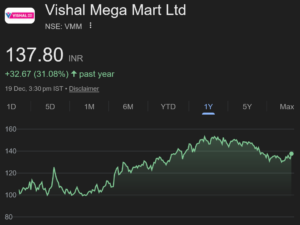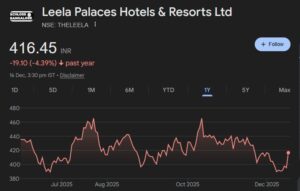
Latest portfolio of Aberdeen Asset Management
Aberdeen Asset Management Fund has an AUM of $400 Billion which translates into a staggering Rs. 26 lakh crore.
It is obvious that Aberdeen wields an enormous influence in the global financial markets and its words and deeds cannot be taken lightly.
Aberdeen has a fund dedicated to emerging markets called the “Emerging Market Fund”. This Fund has an AUM of $7.7-billion. It is not surprising that the Fund has made the highest allocation to India compared with other emerging countries.
Lets take a quick look at the stocks held by Aberdeen Emerging Market Fund in its latest portfolio:
| Portfolio of Aberdeen Emerging Market Fund | ||
| Company | No of Shares (in Lakhs) | Rs Crore |
| CMC | 18.43 | 375 |
| CMC | 18.20 | 370 |
| ING Vysya Bank | 71.49 | 735 |
| CMC | 4.70 | 96 |
| Nestle India | 11.11 | 693 |
| Gujarat Gas | 58.23 | 360 |
| Sanofi India | 3.60 | 150 |
| Grasim Industries | 88.25 | 928 |
| ABB India | 32.66 | 402 |
| Castrol India | 61.40 | 265 |
| Piramal Enterprises | 45.37 | 858 |
| Grasim Industries | 152.52 | 1,605 |
| Container Corporation of India | 55.80 | 685 |
| The Ramco Cements | 32.17 | 217 |
| The Ramco Cements | 28.35 | 192 |
| MphasiS | 22.65 | 131 |
| Hero Motocorp | 27.63 | 857 |
| Ambuja Cements | 306.76 | 734 |
| Sanofi India | 9.65 | 402 |
| Bosch | 3.88 | 841 |
| Godrej Consumer Products | 52.79 | 867 |
| The Ramco Cements | 25.47 | 172 |
| Hero Motocorp | 21.81 | 677 |
| Kansai Nerolac Paints | 169.49 | 595 |
| City Union Bank | 96.50 | 145 |
| ACC | 33.43 | 486 |
| MphasiS | 102.41 | 591 |
As one can see, the choice of stocks is impeccable. The portfolio is packed with blue chip powerhouse stocks.
Portfolio gives YOY return of 27%
The Emerging Market Fund has delivered a return of 27 percent to investors in the past year. This performance is quite commendable and has beaten 61 percent of its peers.
Hugh Young, the CEO of the Fund, is obviously delighted at the state of affairs.
“This is a reflection of the quality and value of the underlying companies,” Young said with a big smile. He added that the Fund is “particularly bullish” on India.
The reforms are coming through as promised
Hugh Young is appreciative of the fact that NAMO has pushed through a slew of reforms such as amending the archaic bankruptcy rules, allowing more foreign investment and implementing GST.
He is also dismissive of the impact of demonetization.
“Demonetization has been a bit clumsy and certainly has dented growth in the short-term but this shouldn’t affect longer-term prospects,” he said in a confident tone.
Forget “wait and watch” mode; buy stocks now because India’s economy is improving
“We are not in wait-and-see mode anymore,” Young said.
“Even though it is still relatively early days, the economy has transitioned, we are already seeing significant improvement and the groundwork has been laid for even stronger performance ahead,” he added.
He also emphasized that India is “isolated” and less threatened by possible protectionist measures by Donald Trump, the POTUS.
How can India have the “lowest investment grade” even while Spain & Italy enjoy a better credit?
Hugh Young made it clear that he is irked by the fact that the three elite rating agencies, Moody’s, S&P and Fitch, have awarded India a rating of ‘Baa3’ and ‘BBB-‘, which are the “lowest investment grade”, even while giving Spain and Italy a higher rating.
He explained that the rating agencies have lost sight of the fact that Spain and Italy have a higher debt-to-gross domestic product ratio in comparison to India.
“It makes no sense,” Young fumed.
“As usual it looks like the market is well ahead of the rating agencies on this one … India deserves an upgrade,” he added.
“To not acknowledge that the outlook has improved is staggering,” he commented in an irate tone.
Rating agencies are mellowing in their tough stance towards India?
The indications are that the stern stance of influential leaders like Huge Young may be inducing the rating agencies to upgrade India.
William Foster, the vice-president of Moody’s, struck a conciliatory note:
“We are not looking at any particular reform in isolation, but at the totality of reforms and their overall effectiveness on achieving sustainable investment-led growth and more favorable government debt dynamics,” he said.
A similar sentiment was expressed by Thomas Rookmaaker of Fitch.
If the rating agencies do see sense and upgrade India, it will spell a bonanza for the Country. Higher ratings will help India to attract more foreign investors, lower borrowing costs and accelerate growth.
Conclusion
Hugh Young’s endorsement of India as an investment destination for foreign investors is in line with the view expressed by other influential fund managers such as Prem Watsa, Bruce Flatt, Jamie Dimon, Mark Mobius etc. The only discordant note is struck by Billionaire Charlie Munger who described the Country as “Grossly Defective With Bunch Of Idiots”. However, it appears that Charlie Munger had a different context in mind and that he was not evaluating India as an investment destination!







I am not I am finding the same results and if you see the Aberdeen Emerging Market fund fact sheet at http://www.aberdeen-asset.com/doc.nsf/Lit/FactsheetUSOpenEmergingMarkets, you will see that their performance is pretty erratic.
GO INDIA GO…:)
Charlie munger didn’t mean India is a bad investment destination. He said that we took the worst of democracy and implemented it in India. When Modi has a massive mandate from the people, still we allow some illiterate pappu and mad woman and Bihar goons to stop progress becuase a consensus is required. This is what Mumger was distraught about. How stupid of us. How can a mandate of the people not be enough. If Modi was given majority, it should be his responsibility to fulfill the people’s mandate and proceed with his goals and ambitions for this country without needing approval from individuals again.
Modi was given a mandate to govern. That doesn’t mean he can do so according to his whims and fancies. There are checks and balances in very democracy, though the present regime would like to act as an autocracy.